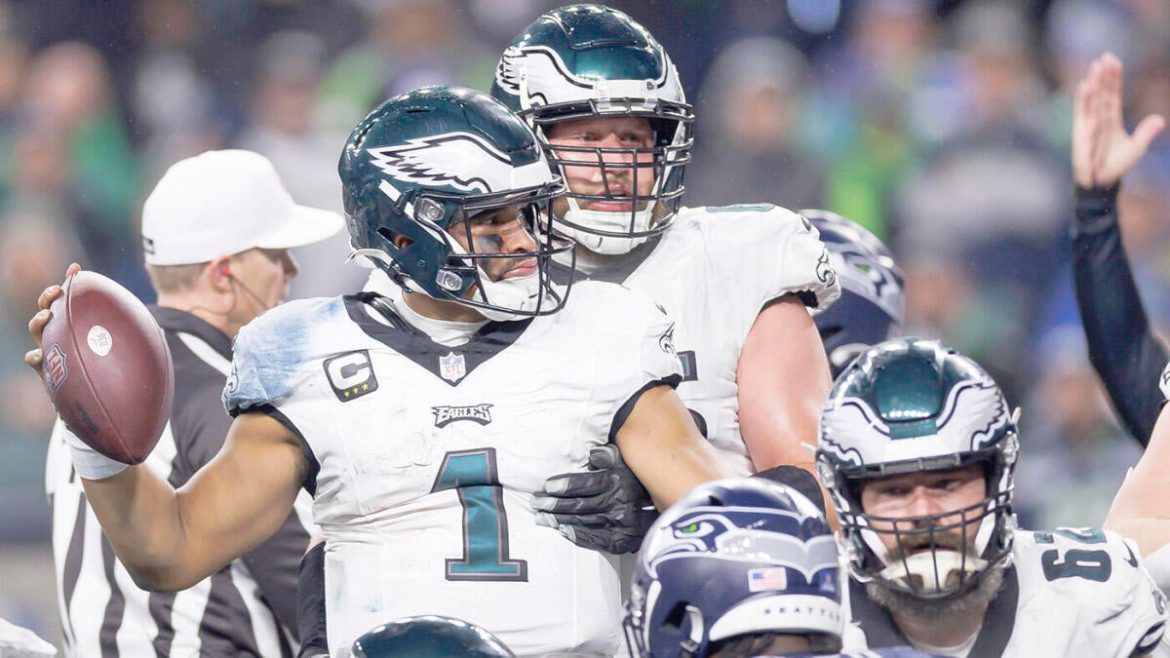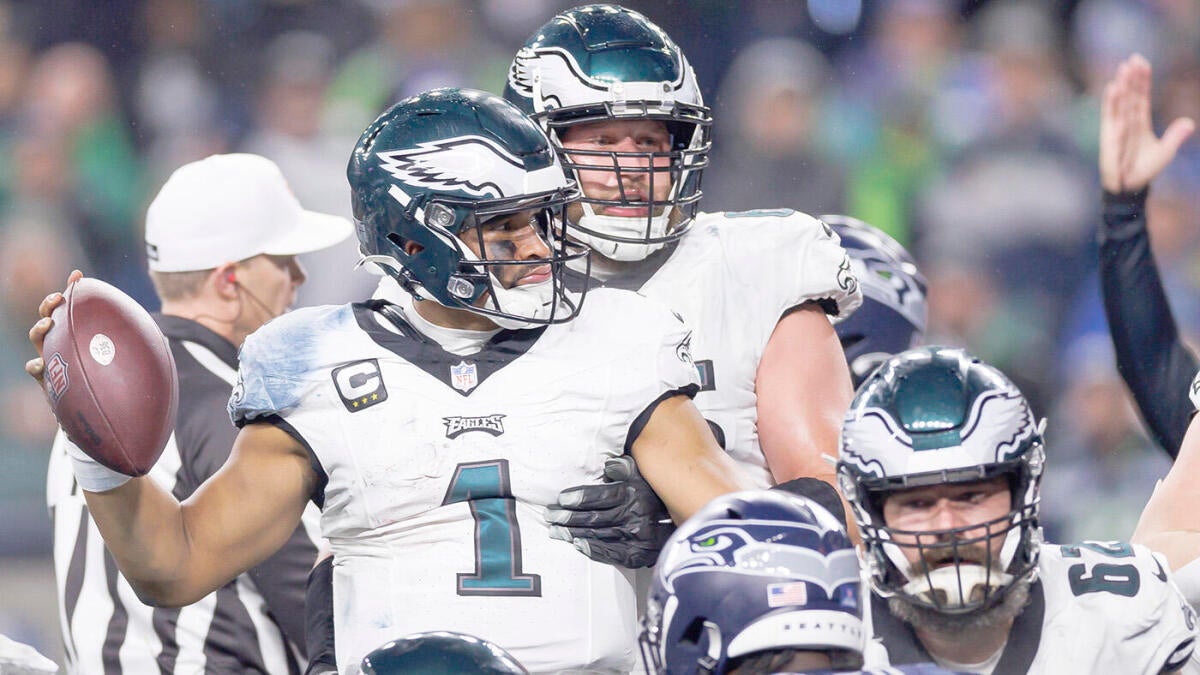The ongoing debate surrounding the “tush push” in the NFL has sparked considerable attention, dividing teams, fans, and analysts alike. This critical play—a quarterback sneak variant where offensive teammates push the quarterback forward—is mainly associated with the Philadelphia Eagles and has had a profound impact on the league’s recent competitive landscape. An examination of recent events and reactions reveals a layered story of winners, losers, and the complex dynamics shaping professional football’s future.
The “Tush Push” Phenomenon: Origins and Impact
The “tush push” has emerged as a highly effective tactic in short-yardage and critical game situations, notably employed by the Philadelphia Eagles under quarterback Jalen Hurts. This play involves teammates, usually from the offensive line or skill positions, physically pushing the quarterback forward to gain crucial inches or yards during sneaks, effectively turning traditionally risky plays into near-certainties for critical first downs or touchdowns.
This technique’s success pushed the Eagles to two Super Bowl appearances, including a win and a narrow loss, solidifying the play’s place in the modern NFL lexicon. Its rise underlines not just strategic creativity but also raises questions about fairness, game integrity, and whether it challenges traditional notions of skill versus brute force.
The 2025 NFL Spring Meeting: A Controversial Vote
At the 2025 NFL annual spring meeting, league owners were set to vote on potentially banning the “tush push.” The proposal, led notably by the Green Bay Packers—longtime rivals and critics of the play—aimed to preserve competitive balance and address concerns about the play’s impact on the game’s flow and fairness. However, the vote was tabled, postponed to a later date, after failing to garner the necessary majority.
The postponement itself is a significant event. It reveals a split in ownership views: while roughly half the teams support banning the play, the other half sees its retention as preserving a unique, exciting element of NFL strategy. According to reports, 22 owners voted against banning (“keeping the tush push”), while 10 favored prohibition. This division spotlights the tension between innovation and traditionalism in the sport.
Teams on Both Sides: Winners and Losers of the Debate
Winners:
– Philadelphia Eagles: Clearly the biggest beneficiaries of the play’s current legality, the Eagles have built a reliable scoring and conversion weapon around the “tush push.” It contributes to their recent success and playoff resilience.
– Teams Enjoying Offensive Creativity: Some franchises argue that the “tush push” adds excitement and maintains the physical, fast-paced identity of the NFL. Keeping it aligns with fans’ appreciation for diverse strategies.
Losers:
– Green Bay Packers: Leading the charge against the play, the Packers have voiced concerns about fairness and “pace of play,” viewing the “tush push” as an overpowered, unstoppable tactic that undermines defensive skill.
– Other Defenses: Defensive coordinators and players around the league have struggled to contain this tactic, leading to frustration and calls for rule adjustments to level the field.
– Fans Seeking Consistency: Some view the ongoing debate and delayed decisions as a negative, contributing to uncertainty and confusion about what is allowed on the field.
The Broader Context: Rule Changes and NFL Dynamics
The “tush push” debate does not exist in isolation. It parallels other NFL rule changes and controversies over the past seasons: overtime format tweaks, player safety protocols, and equipment regulations. The league’s attempts to balance innovation with fairness illustrate the dynamic and evolving nature of professional football.
Moreover, the discussions around the “tush push” echo larger themes about how much physicality and strategy should dominate the sport versus pure athleticism. The NFL’s decision-making reflects how owners balance competitive equity, fan engagement, and tradition.
What’s Next? Projecting the Future of the “Tush Push”
With the vote delayed, anticipation mounts. The shelving may signal more behind-the-scenes discussions, potential modifications to the proposal, or a move to grandfather in aspects of the play. Key questions remain:
– Will the NFL ultimately ban the “tush push,” or will it be preserved as a legitimate tactic?
– If banned, what substitute rules or allowances will the league create to compensate?
– How will this decision impact team strategies and future drafts?
Given the division among owners and the clear competitive stakes, any future ruling will have ripple effects, influencing coaching decisions, player training, and possibly shifting power dynamics among franchise contenders.
Conclusion: A Defining Moment for NFL Strategy and Identity
The “tush push” debate transcends one play—it highlights the NFL at a crossroads of innovation and regulation. As teams wrestle with balancing creativity and fairness, fans watch a drama unfolding that could redefine short-yardage football strategies. The Philadelphia Eagles stand as prime exemplars of adapting and thriving, while opposers like the Packers represent the desire for a level playing field.
Ultimately, this saga showcases that the NFL continues to evolve, not just through spectacular athleticism but through strategic ingenuity and governance. The outcome will shape not only the 2025 season but set a precedent for how the league manages innovation, competition, and tradition in the years ahead.





